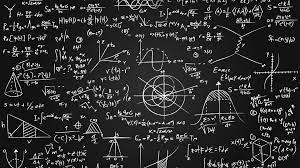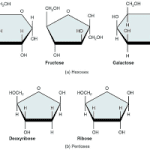When it comes to complex math challenges, the Riemann Hypothesis reigns as the toughest. Proposed by Bernhard Riemann, it deals with prime numbers and the zeta function’s zeros. Claiming that zeros’ real part equals 0.5, it has stumped mathematicians for centuries. Want to uncover more mathematical enigmas and mysteries?
The Riemann Hypothesis: Unraveling the Enigma
Unraveling the enigmatic Riemann Hypothesis requires a deep dive into the complexities of prime numbers and their distribution. This conjecture, proposed by Bernhard Riemann in 1859, remains one of the most challenging problems in mathematics. The hypothesis is deeply interconnected with the distribution of prime numbers, which are the building blocks of all integers. To tackle this puzzle, mathematicians delve into the intricate patterns and relationships between these elusive prime numbers.
One key element of the Riemann Hypothesis involves the zeta function, a complex mathematical construct that plays a fundamental role in number theory. By studying the zeros of the zeta function, researchers aim to uncover the secrets hidden within prime numbers’ distribution. The Riemann Hypothesis asserts that all non-trivial zeros of the zeta function have a real part of 0.5, yet proving this remains a formidable challenge.
Through rigorous analysis and innovative approaches, mathematicians worldwide continue to push the boundaries of knowledge in pursuit of a solution to the Riemann Hypothesis.
Birch and Swinnerton-Dyer Conjecture: A Mathematical Mystery
To further explore challenging mathematical conjectures beyond the Riemann Hypothesis, consider the enigmatic Birch and Swinnerton-Dyer Conjecture. This conjecture, proposed in 1965 by Bryan Birch and Peter Swinnerton-Dyer, delves into the relationship between the rational points on elliptic curves and the behavior of corresponding L-functions.
The conjecture suggests that the rank of the group of rational points on an elliptic curve is related to the order of vanishing of the L-function associated with that curve at a certain point. If the L-function vanishes to a certain order, then the elliptic curve would have a finite number of rational points, indicating a finite rank. Conversely, if the L-function doesn’t vanish, the curve would have infinitely many rational points, implying an infinite rank.
Despite significant progress in specific cases and its implications in number theory and cryptography, the Birch and Swinnerton-Dyer Conjecture remains unsolved, captivating mathematicians with its profound mysteries.
P Vs. NP Problem: the Holy Grail
Delving into the complexities of computational theory, the enigmatic P Vs. NP Problem stands as the Holy Grail of computer science. This fundamental question seeks to determine whether every problem whose solution can be verified quickly (in polynomial time) can also be solved quickly (in polynomial time). The crux of the issue lies in differentiating between problems that are easy to solve and those that are easy to check.
The implications of solving the P Vs. NP Problem are profound. A resolution could revolutionize cryptography, optimization, artificial intelligence, and many other fields by providing efficient solutions to currently intractable problems. However, despite decades of intense study, the problem remains unsolved.
Many believe that P doesn’t equal NP, meaning that there are problems for which verifying a solution is significantly easier than finding the solution itself. This conjecture has vast consequences for the limits of computation and has captured the imagination of mathematicians and computer scientists alike. The quest to unravel this enigma continues to drive research and innovation in the field of theoretical computer science.
Navier-Stokes Existence and Smoothness: Fluid Dynamics Dilemma
In the realm of fluid dynamics, understanding the Navier-Stokes Existence and Smoothness problem poses a significant challenge for researchers. This dilemma revolves around the Navier-Stokes equations, which describe how fluids such as air and water flow. The problem seeks to determine whether smooth solutions to these equations exist globally in three dimensions, or if they can develop singularities in finite time. The complexity arises from the nonlinear nature of the equations, making it difficult to prove the existence of solutions or understand their behavior.
Researchers face the daunting task of grappling with the intricacies of fluid dynamics while trying to unravel this long-standing mathematical mystery. The implications of solving the Navier-Stokes problem extend beyond the realm of mathematics, with potential applications in engineering, weather forecasting, and climate modeling. Despite decades of research and progress, the quest for a complete understanding of the Navier-Stokes equations continues to challenge the brightest minds in the field.
Collatz Conjecture: Infinite Sequences Challenge
Navigating from the complexities of fluid dynamics, the mathematical community faces a formidable challenge with the Collatz Conjecture: Infinite Sequences Challenge.
The Collatz Conjecture, also known as the 3x+1 problem, involves an intriguing sequence defined by a simple rule. Beginning with any positive integer n, if n is even, divide it by 2; if n is odd, multiply it by 3 and add 1. The conjecture posits that, regardless of the starting number, this process will always eventually lead to the value 1.
Despite its simplicity, verifying this for all numbers remains elusive, making it a perplexing problem in number theory. Mathematicians have explored countless sequences, delving into intricate patterns and elusive cycles, yet a universal proof still eludes even the most brilliant minds.
The Collatz Conjecture stands as a testament to the enduring allure of unsolved mathematical mysteries, challenging both seasoned professionals and enthusiastic amateurs to unravel its enigmatic secrets.
Frequently Asked Questions
Are There Any Real-World Applications or Implications of the Riemann Hypothesis?
In the real world, the implications of the Riemann Hypothesis extend to cryptography, prime numbers, and the distribution of prime numbers. Its proof could revolutionize number theory and secure online communication. Its mystery captivates mathematicians globally.
How Do Mathematicians Approach Solving the Birch and Swinnerton-Dyer Conjecture?
When tackling the Birch and Swinnerton-Dyer Conjecture, mathematicians approach the problem by delving into elliptic curves and exploring their properties. Through rigorous analysis and specialized techniques, you strive to uncover insights that may lead to a solution.
What Are Some Potential Consequences if the P Vs. NP Problem Is Resolved?
If the P vs. NP problem is resolved, it could revolutionize computer science, cryptography, and optimization, leading to faster algorithms and breakthroughs in various industries. The impact would be monumental and shape future technologies.
How Do the Navier-Stokes Equations Impact Our Everyday Lives?
In your everyday life, the Navier-Stokes equations play a crucial role in understanding fluid motion, from weather predictions to designing efficient vehicles. They impact various industries, making them essential for technological advancements and scientific research.
Are There Any Practical Uses for Understanding the Collatz Conjecture?
Understanding the Collatz Conjecture can enhance problem-solving skills and logical reasoning. Its application may not be direct in daily life but mastering such mathematical concepts can train your mind to tackle complex challenges effectively.
Conclusion
You’ve explored some of the most challenging math problems out there, from the enigmatic Riemann Hypothesis to the elusive P vs. NP problem.
These complex mathematical challenges continue to push the boundaries of human knowledge and understanding.
Keep exploring, keep questioning, and who knows, maybe you’ll be the one to unlock the secrets of these mathematical mysteries.
Math may be hard, but the thrill of discovery makes it all worth it.


